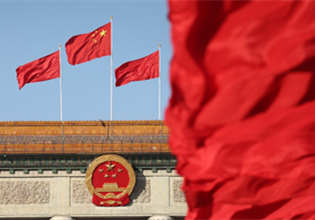Inner Mongolia on path to high-quality development
Since the 18th National Congress of the Communist Party of China in 2012, North China's Inner Mongolia autonomous region has been committed to a high-quality economic development path through economic structure adjustments and opening-up to northern countries.
Statistics show that by the end of 2020, Inner Mongolia's 1.57 million impoverished residents, 31 poverty-stricken counties and banners at the national level and 26 ones at the autonomous region level were lifted out of poverty.
In Inner Mongolia, housing security, compulsory education, basic medical care and safe drinking water have all reached the required standards, while production and living conditions in poverty-stricken areas have improved significantly.
More than 70 percent of the region's special poverty alleviation funds were used to support the development and growth of new business entities, including leading enterprises, cooperative organizations and family farms.
The per capita income of the poor increased from 3,019 yuan ($452.96) in 2015 to 13,159 yuan in 2020, an average annual increase of 34.2 percent.
Inner Mongolia has attached great importance to exploring a path of environmental protection and green development while pursuing improved living conditions for citizens.
During the 13th Five-Year Plan period (2016-20), the region completed desertification land treatment on 71.98 million mu, accounting for more than 40 percent of the national treatment targets.
In 2020, the average coverage of grassland vegetation in Inner Mongolia reached 45 percent, which is 15 percentage points higher than that at the beginning of the 21st century.
From 2016 to 2020, Inner Mongolia eliminated 63.15 million tons of excess production capacity. The average production capacity of a single mine was three times the national level.
Green coal mines accounted for one-third of the region's coal mines in production. Coal-fired power plants have basically achieved ultra-low emissions and fossil energy production is now greener.
Additionally, Inner Mongolia accelerated its opening-up to northern countries and strengthened cooperation with Mongolia and Russia.
In the past five years, the total import and export volume of the region increased by 8.5 percent annually and Inner Mongolia served nearly 50 percent of the country's departing China-Europe freight trains.
In terms of international land routes, the Ulaanqab-Ulaanbaatar-Ulan-Ude channel was jointly built by local people, and Russia and Mongolia.
The total volume of foreign trade imports and exports were increased from less than $100 million in 2016 to $440 million in 2020, an average annual growth rate of 45.1 percent.



 Print
Print Mail
Mail





